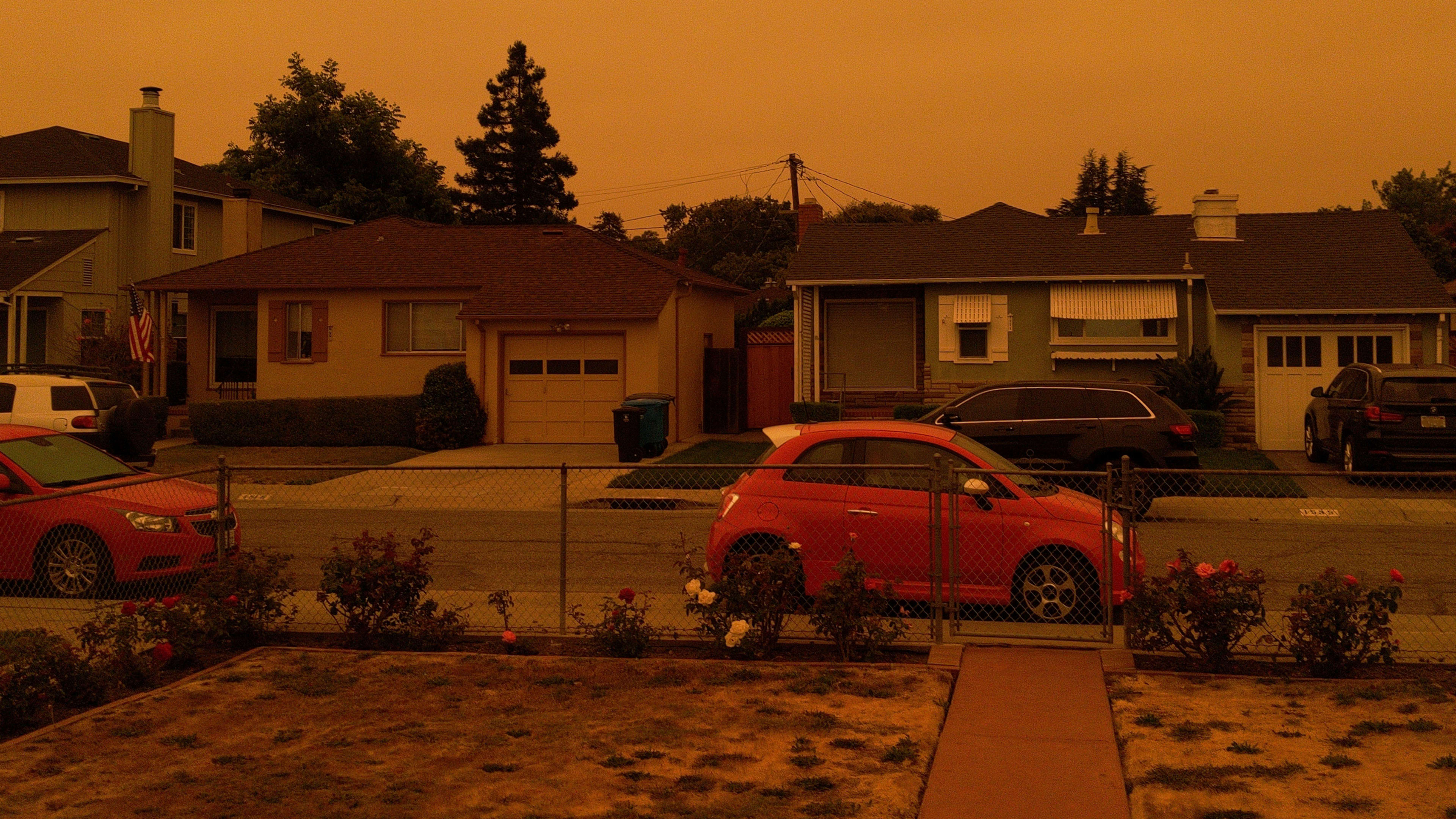Fires have been burning in California for weeks, and a new heat wave and strong winds over Labor Day weekend sparked several more across the state and in Oregon. With those fires has come intense, thick smoke affecting the region’s air quality (San Francisco has had 23 straight days of warnings about bad air), but the amount of smoke in the sky on September 9 reached a new level, blocking the sun and creating a disturbing orange-hued world.
Though sunrise was at 6 a.m., Twitter users documenting the strange light noticed it was dark well past that time.
The Golden Gate Bridge.
Almost 9 in the morning.
It’s pitch black outside.
Unreal. pic.twitter.com/US2aB9uXOw— Drew Tuma (@DrewTumaABC7) September 9, 2020
San Francisco’s Ocean Beach, 7:38 AM pic.twitter.com/JFaT7a3FVR
— Sasha Perigo (@sashaperigo) September 9, 2020
A government observatory camera simply showed what appeared to be an orange square:
The view from "Mount Vision" near Point Reyes per @NVSeismoLab's https://t.co/wrLjrnA6Mg.
Notice the other regional cams around the North Bay show a similar view. #cawx pic.twitter.com/6RUnFAZvpX
— NWS Bay Area 🌉 (@NWSBayArea) September 9, 2020
In Oregon, close to some of the larger fires, the sky had an extra, pinkish tinge:
Woke up this morning thinking the smoke and sky would be better. Nope. This is the view from my closed blinds right now at 8 am. Oregon Is still on fire. #OregonFires pic.twitter.com/fHOK0XBo8I
— Nons (@Rotnn_) September 9, 2020
9 am this morning and 4:30 pm, foot hills east of Salem. The phone camera always lightens the sky to red, but it was so dark. pic.twitter.com/ROSBEPeSwt
— Kris In Oregon (@shawscricket) September 9, 2020
And across San Francisco, Twitter users documented an orange-gray haze in the sky:
What color is the sky this morning pic.twitter.com/nt5dZp5wWc
— Walter Thompson (@YourProtagonist) September 9, 2020
Good morning from hell pic.twitter.com/z0UcrnghBb
— kelly akemi (@_kelleesi) September 9, 2020
https://twitter.com/jachristian/status/1303707221415440384
Cool. Cool, cool, cool, cool. pic.twitter.com/maTX2mC5Nw
— David Downs (@davidrdowns) September 9, 2020
Meteorologist Drew Tuma put out a call for photos to try to document the sky’s color (a task made more difficult by iPhone’s built-in color correction) and got some great shots:
https://twitter.com/Jordanaglama/status/1303699526302093313?s=20
Fillmore looking east. pic.twitter.com/iughJXoKAF
— colin, supposedly (@shortcirculate) September 9, 2020
https://twitter.com/Just_Donnie_/status/1303705847332175873?s=20
Captured this in South Beach. Top of Salesforce Tower is in the muck. pic.twitter.com/9bZ5kgDrUD
— Michael Krupa 🏳️🌈 (@mikekrupa) September 9, 2020
This year now holds the record for the most acres burned in California: more than 2.2 million. The second and third largest fires in the historical record are currently burning. Fires are also burning across Washington and Oregon (as well as Colorado) and the smoke from all these fires is filtering across the entire United States.
The immediate cause is a recent heat wave—temperatures reached 120 degrees in parts of California) and strong winds—but the deeper problem is a combination of three factors. First, climate change, which is increasing temperatures, resulting in drier fuel, which makes fires easier to start and more likely to expand. Second, the failure of the government to manage wooded areas through controlled burns of their own, which would mitigate the effect of naturally occurring fires. And third, the continued migration of people forced out of cities by high costs, who are moving further and further into wooded areas that are more likely to burn. Until all three are fixed, West Coasters might expect these remarkable skies to simply become their new late summer normal.
Recognize your brand’s excellence by applying to this year’s Brands That Matter Awards before the early-rate deadline, May 3.
